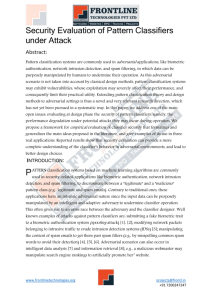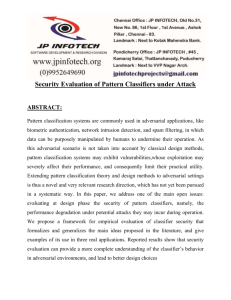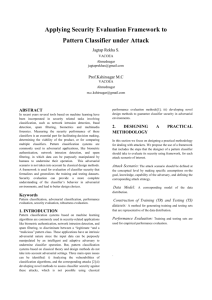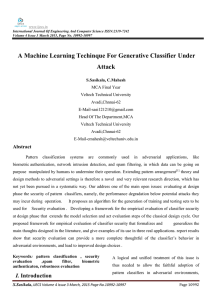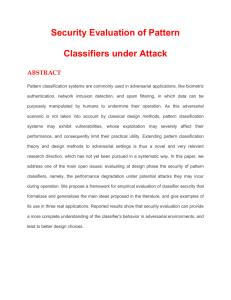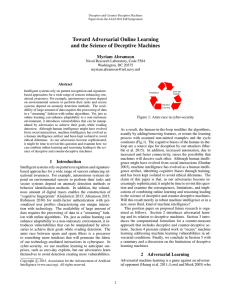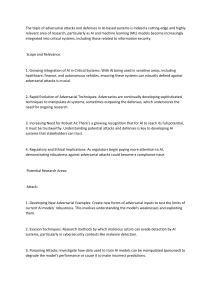Abstract
advertisement
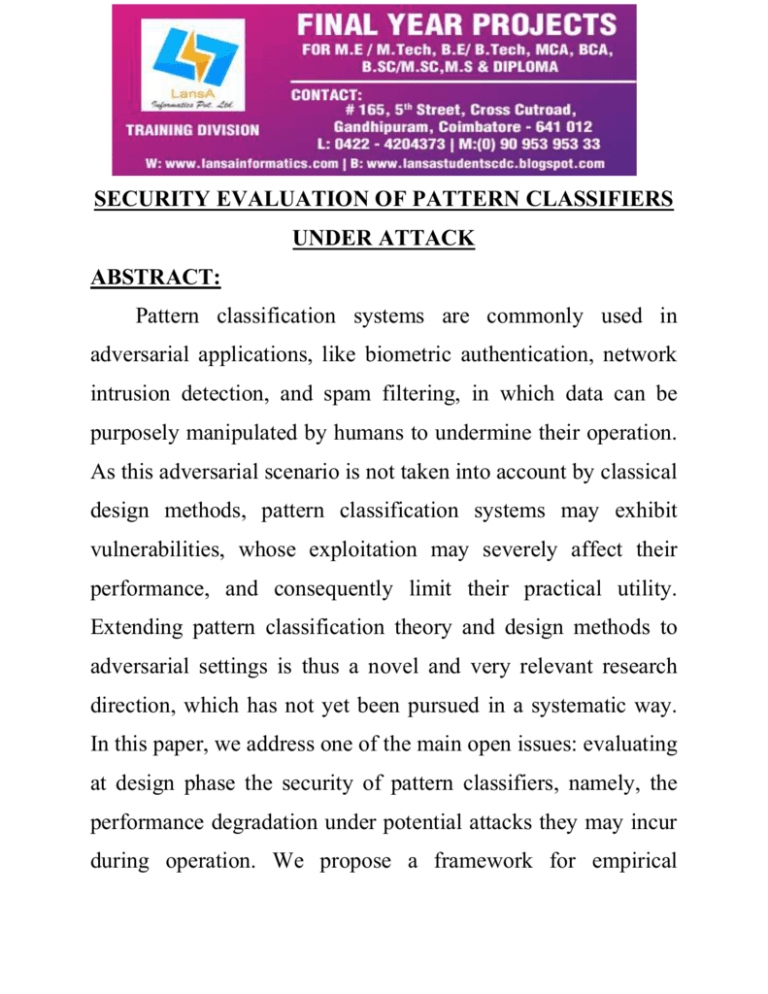
SECURITY EVALUATION OF PATTERN CLASSIFIERS UNDER ATTACK ABSTRACT: Pattern classification systems are commonly used in adversarial applications, like biometric authentication, network intrusion detection, and spam filtering, in which data can be purposely manipulated by humans to undermine their operation. As this adversarial scenario is not taken into account by classical design methods, pattern classification systems may exhibit vulnerabilities, whose exploitation may severely affect their performance, and consequently limit their practical utility. Extending pattern classification theory and design methods to adversarial settings is thus a novel and very relevant research direction, which has not yet been pursued in a systematic way. In this paper, we address one of the main open issues: evaluating at design phase the security of pattern classifiers, namely, the performance degradation under potential attacks they may incur during operation. We propose a framework for empirical evaluation of classifier security that formalizes and generalizes the main ideas proposed in the literature, and give examples of its use in three real applications. Reported results show that security evaluation can provide a more complete understanding of the classifier’s behavior in adversarial environments, and lead to better design choices. EXISTING SYSTEM: PATTERN classification systems based on machine learning algorithms are commonly used in security-related applications like biometric authentication, network intrusion detection, and spam filtering, to discriminate between a “legitimate” and a “malicious” pattern class (e.g., legitimate and spam emails). Contrary to traditional ones, these applications have an intrinsic adversarial nature since the input data can be purposely manipulated by an intelligent and adaptive adversary to undermine classifier operation. This often gives rise to an arms race between the adversary and the classifier designer. Well known examples of attacks against pattern classifiers are: submitting a fake biometric trait to a biometric authentication system (spoofing attack); modifying network packets belonging to intrusive traffic to evade intrusion detection systems (IDSs) ; manipulating the content of spam emails to get them past spam filters (e.g., by misspelling common spam words to avoid their detection). Adversarial scenarios can also occur in intelligent data analysis and information retrieval; e.g., a malicious webmaster may manipulate search engine rankings to artificially promote her website. DISADVANTAGES OF EXISTING SYSTEM: They exhibit vulnerabilities to several potential attacks, allowing adversaries to undermine their effectiveness. It focused on application-specific issues related to spam filtering and network intrusion detection. PROPOSED SYSTEM: First, to pursue security in the context of an arms race it is not sufficient to react to observed attacks, but it is also necessary to proactively anticipate the adversary by predicting the most relevant, potential attacks through a what-if analysis; this allows one to develop suitable countermeasures before the attack actually occurs, according to the principle of security by design. Second, to provide practical guidelines for simulating realistic attack scenarios, we define a general model of the adversary, in terms of her goal, knowledge, and capability, which encompasses and generalizes models proposed in previous work. Third, since the presence of carefully targeted attacks may affect the distribution of training and testing data separately, we propose a model of the data distribution that can formally characterize this behavior, and that allows us to take into account a large number of potential attacks; we also propose an algorithm for the generation of training and testing sets to be used for security evaluation, which can naturally accommodate application-specific and heuristic techniques for simulating attacks. ADVANTAGES OF PROPOSED SYSTEM: It predicts the most relevant, potential attacks through a what-if analysis. It provides practical guidelines for simulating realistic attack scenarios. SYSTEM CONFIGURATION:HARDWARE REQUIREMENTS:- Processor - Pentium –IV Speed - 1.1 Ghz RAM - 512 MB(min) Hard Disk - 40 GB Key Board - Standard Windows Keyboard Mouse - Two or Three Button Mouse Monitor - LCD/LED SOFTWARE REQUIREMENTS: • Operating system : Windows XP • Coding Language : Java • Data Base : MySQL • Tool : Net Beans IDE REFERENCE: Battista Biggio, Giorgio Fumera, and Fabio Roli, “Security Evaluation of Pattern Classifiers under Attack” IEEE TRANSACTIONS ON KNOWLEDGE AND DATA ENGINEERING, VOL. 26, NO. 4, APRIL 2014.
